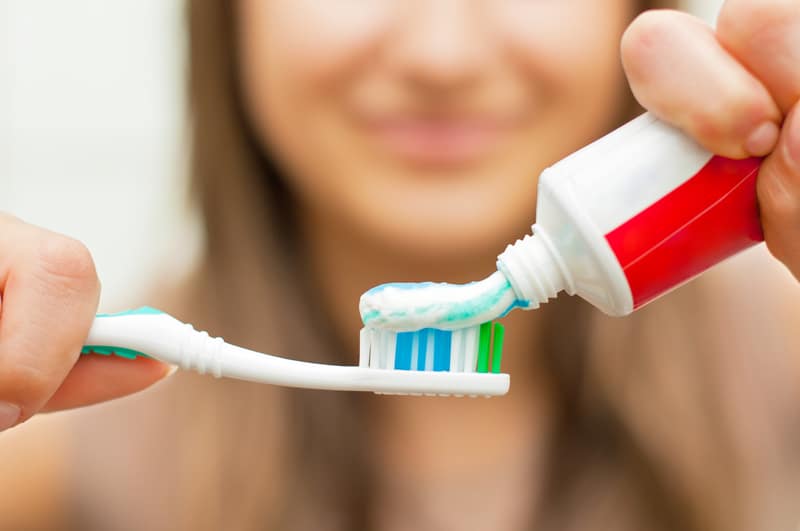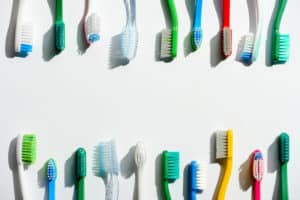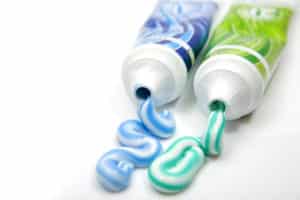Choosing Toothbrushes and Toothpastes


Did you know that it actually does matter what toothbrushes and toothpastes you choose if you want a healthy mouth? You never want to simply buy the cheapest product you can find, nor do you want to use unknown brands. When choosing toothbrushes and toothpastes, they should have the American Dental Association’s Seal of Acceptance on them if they are quality and if they will protect your oral health. Find out what that seal is and what aspects you should look for when choosing toothbrushes and toothpastes!
Oral Hygiene Products: Why You Need Them
Your oral health can have incredible impacts on your overall health, and yet, too many people skip taking care of their teeth and mouths. Studies show that at least 92% of all Americans have had tooth decay. Up to 42% of children get it regularly and about 26% of adults have untreated decay. Gum disease is another major problem, as this is a condition that can lead to tooth loss and mushy gums, and yet, more than 64.7 million American adults get it still from poor oral hygiene habits.
That is why having and choosing toothbrushes and toothpastes is so important. Simply having these products and using them correctly can help you either avoid oral health diseases or can help you significantly reduce your risk for them.

Choosing Toothbrushes
A toothbrush is more than just a handle to hold with a brush attached to it. There are actual designs that go into each toothbrush you buy. The cheapest brands you could buy that are generic products (without a name brand) may not have a design. Whereas, brands such as Crest, Colgate, Gum and more will have many different styles of bristles. These are sometimes mixed with gum massagers, tongue cleaners and other accessories. Some toothbrushes are electric ones, which are powered toothbrushes that might provide a better clean for patients.
When choosing a toothbrush, you will see that they come in different degrees of hardness like “soft” and “hard”. This refers to how firm the toothbrush bristles are, which will reflect how harsh they will be on your teeth. Most patients only need a soft-bristled brush, which helps avoid tooth enamel damage. Some hard-bristled brushes can take off layers of enamel, especially if enamel is weak due to eating and oral hygiene habits. Many toothbrushes have colorful designs and rubber massagers. They can help you remove plaque easier, but when choosing toothbrushes like these, the real thing that matters is how the brush feels in your mouth and if you like using it.
The brush head of the toothbrush is an important aspect your should consider when choosing toothbrushes. There are angled brushes that help you reach the inside of your teeth, where plaque and tartar can build up. There are also also either compact or full-size brush heads. The compact heads are smaller, which work great if you have a smaller mouth. Full-size brushes will fit people with large mouths, but will feel bulky to children or those with small mouths. Try out various types of toothbrushes, but choose one that fits comfortably with your mouth size. This can ensure that it will reach all parts of your mouth easily. The size is also why there are infant and child toothbrushes that are designed for the size of the person that should be using them.

Choosing the Right Toothpastes
There are countless forms of toothpastes out there. Choosing the toothpaste you use is often more important than choosing toothbrushes. That’s because toothpastes contain chemicals and substances that will do different actions on your teeth. A good recommendation is to only choose toothpastes that are approved by the American Dental Association. These ones will have the ADA Seal of Acceptance, meaning they abide by strict rules of quality that help reduce your risk for oral health problems.
If a product has the Seal of Acceptance, it has been tested and proven effective for combating decay-causing bacteria. These product must also contain fluoride. This is a natural mineral that helps provide a barrier between bacteria and your teeth. Good toothpastes will be free of decay-causing substances (like sugar) that damage your teeth and can only contain active ingredients that will improve your oral health. No-name brands or ones without the Seal of Acceptance are ones you want to avoid, as you don’t know if their chemicals will be harmful for your teeth or your body.
Many toothpastes have extra components meant to tackle certain oral health problems such as gum disease or tooth sensitivity. Toothpastes for sensitive teeth, for example, will contain potassium nitrate, which masks areas of the teeth with sensitivity, helping to stop pain signals. Choose a toothpaste that is safe and one that will meet your oral health needs effectively.
How You Should Use Those Products
The ADA recommends that every patient brush their teeth at least twice a day (even infants), for two minutes at a time, covering all tooth surfaces. You should floss your teeth 1-2 times a day as well, while also making sure you visit the dentist twice a year for dental cleanings and exams. These measures will significantly reduce your risk of oral health diseases.
Choosing toothbrushes and toothpastes is a personal choice, but one that can affect if you will brush your teeth often or not. If you don’t like the products you have, you won’t use them. Buying no-name brands can be risky, as you don’t know if the company follows safety regulations in the materials they use (which you put in your mouth). Find products you like so that you can use them, and follow the recommended guidelines for use if you want to avoid oral health diseases. To find out what products we like to use, call Dr. Ania’s office today at 303-443-0998!


